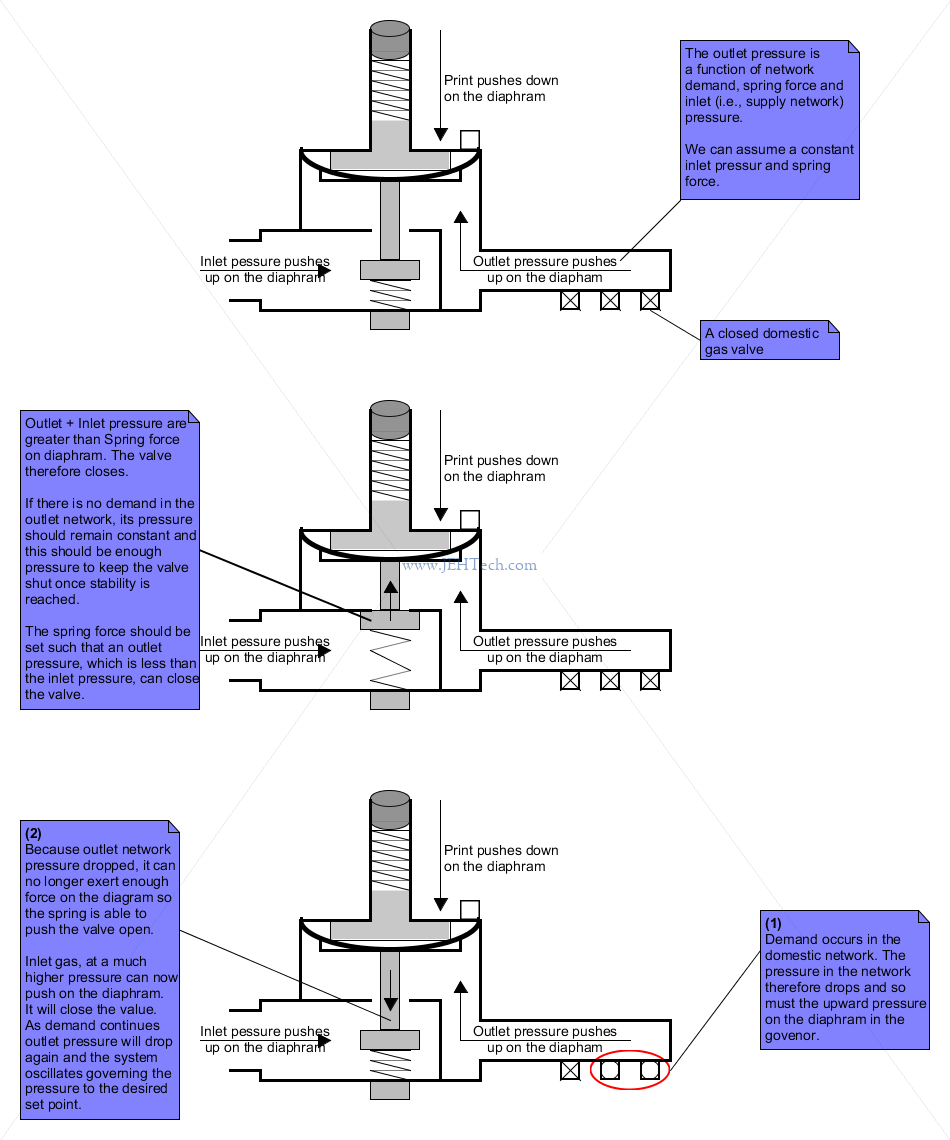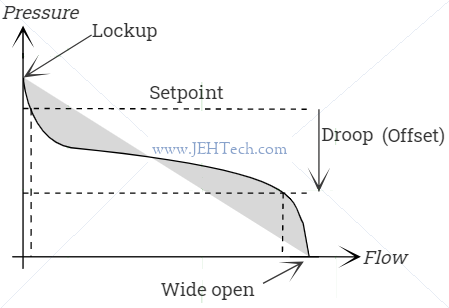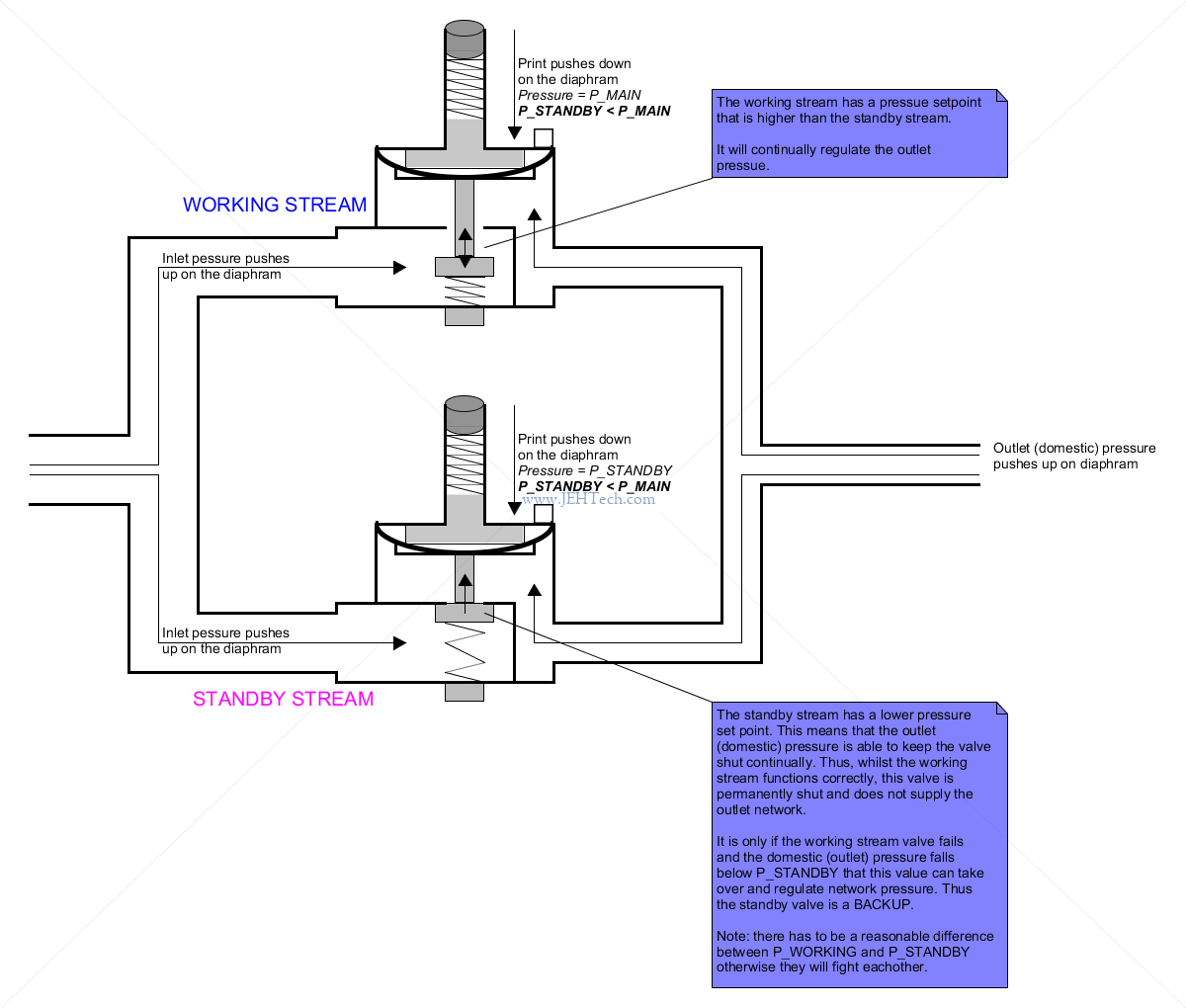Gas Networks Notes
Page Contents
References / useful Links
- Using The Ideal Gas Law, Study.com.
- How does a natural gas regulator work, "grayfurnaceman" on YouTube.
- Slam-shut Valve in Operation, Giuseppa Barresi on YouTube.
- How Does a Direct-Operated Pressure Regulator Work? (Part 1)
- Technical Referance On Regulator Theory , Fisher.
- Pressure Regulator Droop and 5 Ways To Minimize It, Josh Van Ryzin.
The Ideal Gas Law
The ideal gas law allows us to model gas pressure at "normal" temperatures and
pressures [Ref]:
This tells us that if volume is constant, the more gas that is pushed into a network, the higher the pressure.
Hooke's Law And Sping Constant
The force exerted by a spring can be described using Hooke's law:
Relating Force To Pressure And Vice Versa
Force is related to pressure as follows:
A Basic Govenor Valve
The Fisher guide gives a nice summary of a governor's pupose:
The primary function of any gas regulator is to match the flow of the fas through the regulator to the demand for gas placed upon the system. At the same time, the regulator must maintain the system pressure within certain acceptable limits...
...If the load flow decreases, the regulator flow must decrease also. Otherwise, the regulator would put too much gas ... into the system and the pressure would tend to increase. On the other hand, if the load flow increases, the the regulator must increase also in order to keep ... [pressure] from decreasing due to a shortage of gas in the [network]...

Theoretically, for force excerted on the govenor's pilot spring can be related to the gas outlet pressure using the above equations.
The Fisher's guide also gives some useful terminology that is important to know:
Setpoint
The constant pressure desired is represented by the setpoint. but no regulator is ideal ... The setpoint is determined by the initial compressure of the regulator spring ...
Droop
Droops, proportional band, and offset are terms used to describe the phenomenon of pressure dropping below setpoint as flow increases. Droop is the amount of deviation from setpoint at a given flow, epxressed as a percentage of setpoint...
Accuracy
The accuracy of a regulator is determined by the amount of flow it can pass for a given amount of droop. The closer the regulator is to the idea regulator curve (setpoint), the more accurate it is.
Lockup
Lockup is the pressure aboe setpoint that is required to shut the regulator off tight...

Adding Redundancy/Backup Valves
